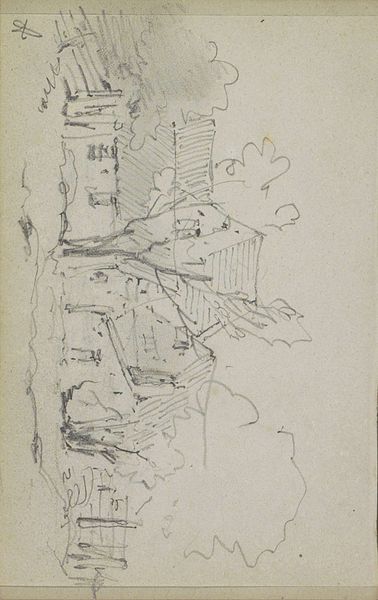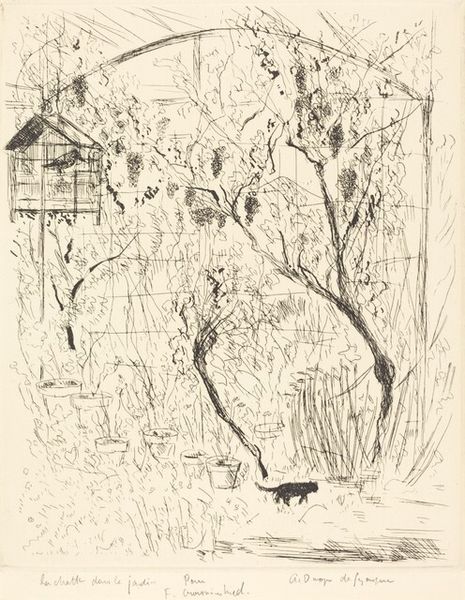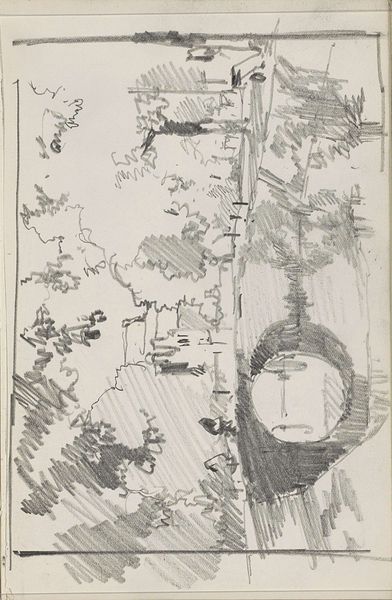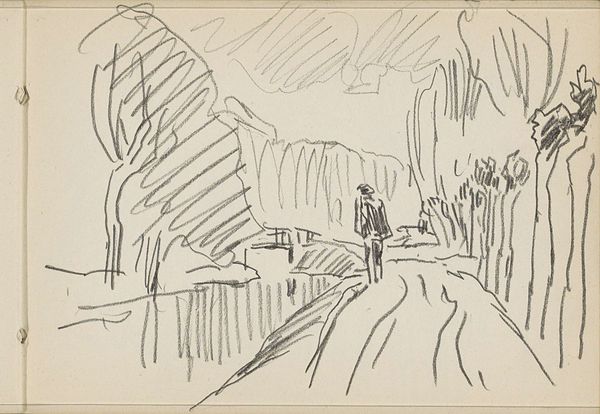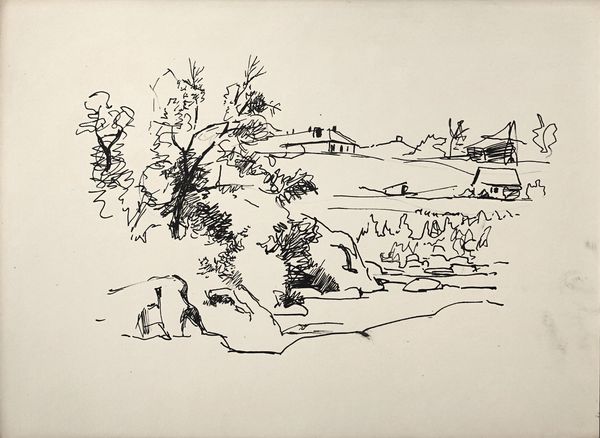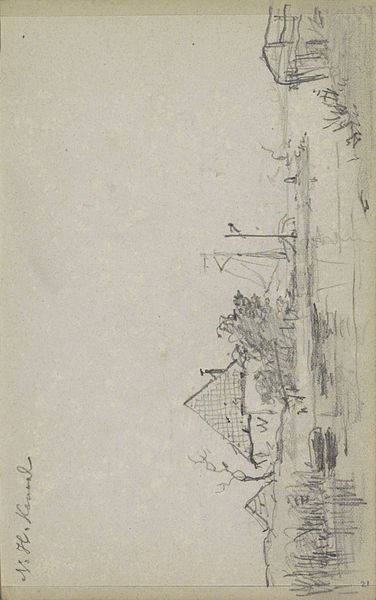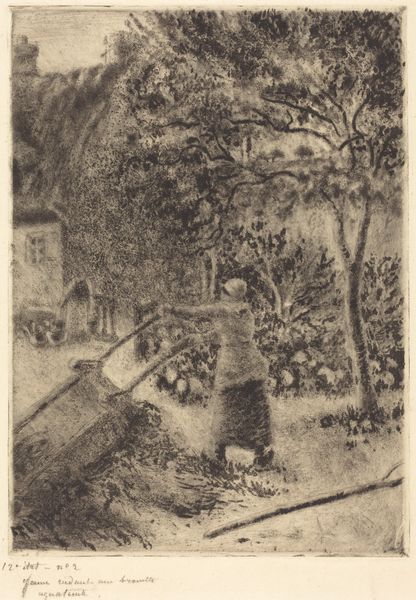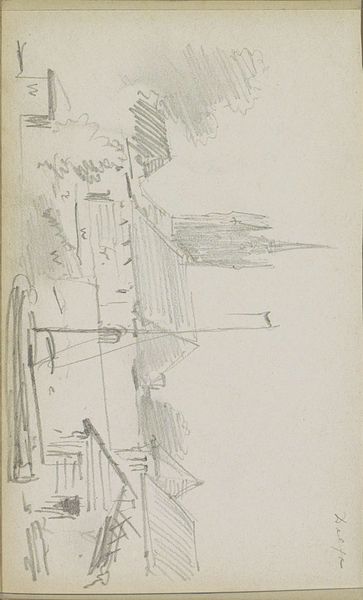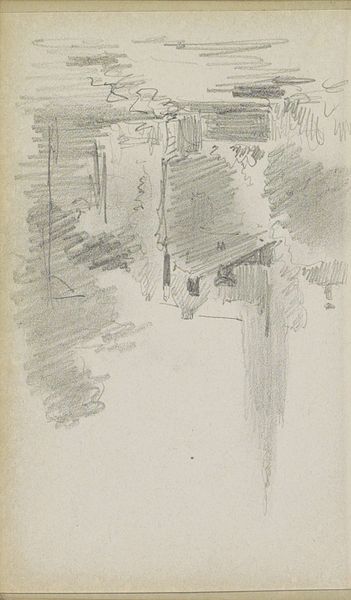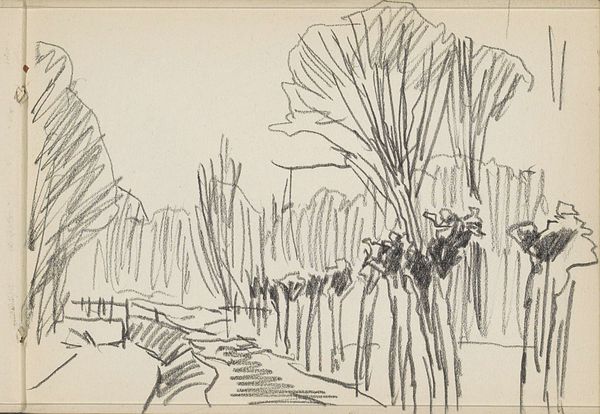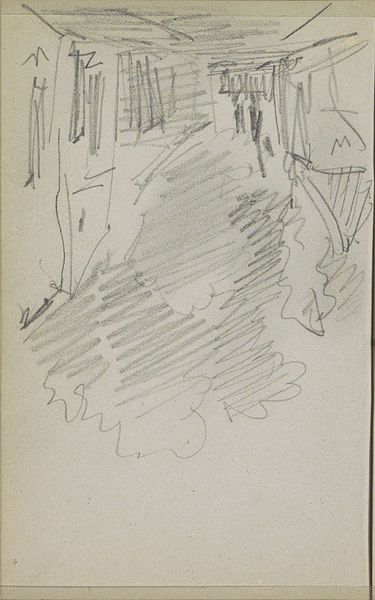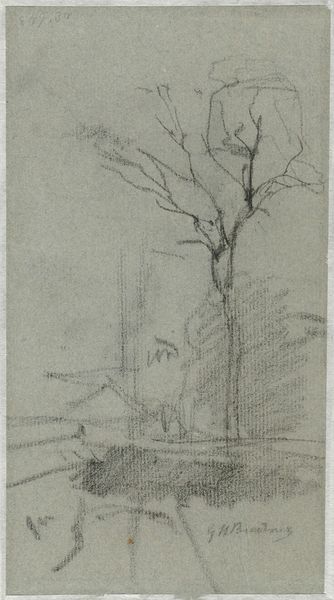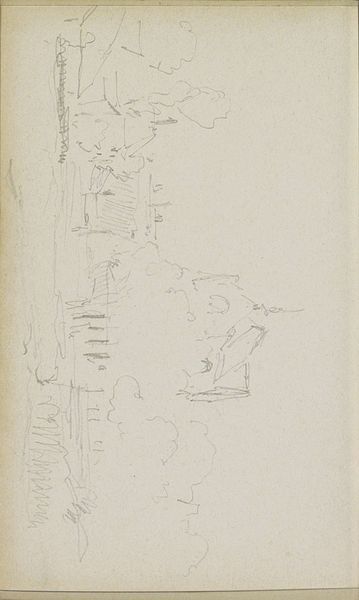
Copyright: Public Domain: Artvee
Curator: This is Édouard Vuillard’s drawing “The Square” from 1910, executed in ink. What are your first thoughts on encountering it? Editor: Immediately, there's a striking sense of urban alienation, paradoxically framed within this classically rendered public space. The sepia tone gives it the quality of an old photograph, further cementing the piece’s nostalgic look at isolation amid social architecture. Curator: Vuillard often worked within intimate domestic spaces, but here he depicts a public square. I see a dance between intimacy and the public sphere, a hallmark of the Parisian experience. What meanings do you gather from the looping gestures of the artist’s marks? Editor: Those swirling lines contribute to the atmosphere of isolation, for me. Notice the almost anonymous figures that inhabit the park’s edge. Their scale and loose rendering creates a certain distance from us. Perhaps mirroring Vuillard's distance from his own changing Paris, from an elite perspective. Curator: I would have guessed those swirling, broken gestures that evoke foliage and shrubbery might represent nature's presence, yet filtered through Vuillard's introspective view of modernity. Look at how these swirling lines resolve into shapes which invite you in but also hide what may lay inside the landscape’s recesses. Editor: I disagree: consider the perspective. From where is the picture composed? It doesn’t feel immediately clear and therefore not quite inviting. It makes me think about urban planning in this period and about whose gaze is prioritised. Was this intended to be a space of respite for everyone or were there exclusions at play? Curator: That is a crucial question when decoding the psychology of such seemingly simple cityscapes. Vuillard uses these ubiquitous spaces, a square here, a drawing room there, to explore what lay deeper, just beneath the surface, inviting viewers to decode his work on many levels. Editor: So even with this seemingly simple sketch we uncover the complicated layers beneath turn-of-the-century bourgeois life! Curator: Exactly! And this piece in particular serves as an incredible meditation on urban life at the crossroads of modernity.
Comments
No comments
Be the first to comment and join the conversation on the ultimate creative platform.
